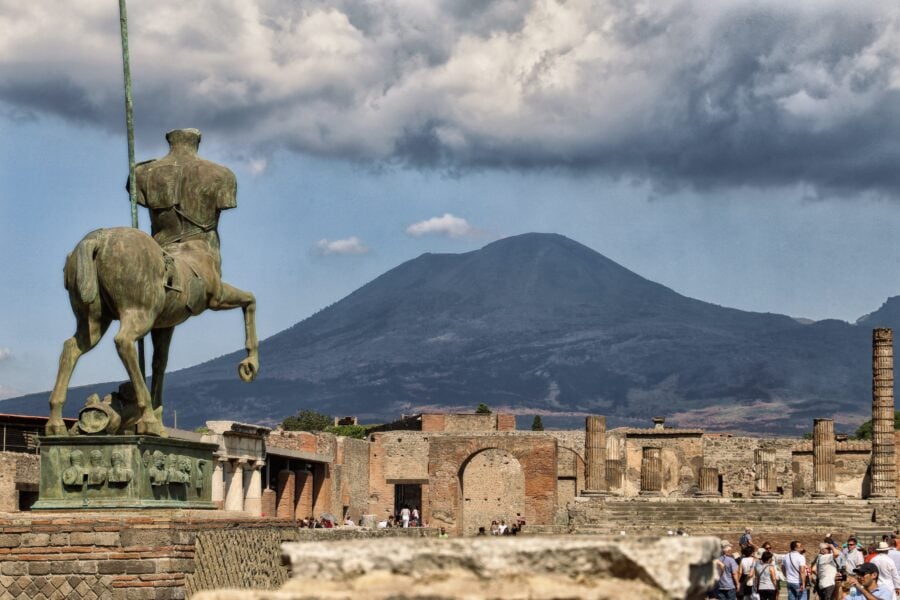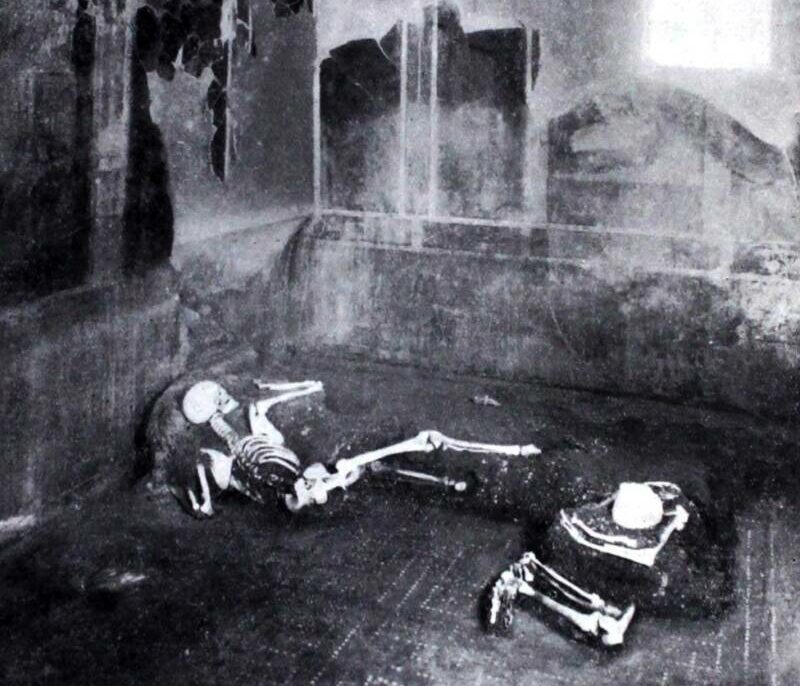Back in 1933, archaeologists found the skeletons of two ancient inhabitants of Pompeii who died in the eruption of Mount Vesuvius on August 24, 79 AD. For some reason, these people did not escape the natural disaster, but their remains are well preserved. Almost a hundred years later, this gave scientists the opportunity to learn the story of one of the Pompeians.
A photo from the 1930s shows two residents of the “Craftsman’s House” lying in the corner of the home dining room, as if a catastrophe had caught them during lunch. Scientists have been able to decipher the mitochondrial DNA of one of them. This is the first time that the genome of a Pompeian has been sequenced.
Deciphering showed that a resident of the house suffered from spinal tuberculosis, known today as Pott’s disease. Symptoms of this disease include back pain and lower body paralysis. Probably because of it, the man was less mobile and could not escape from the city, even if he wanted to.
Also, the decoding of DNA allowed scientists to find out the origin of the Pompeian. Some of his ancestors came from Anatolia, which is located in modern Turkey. The man is also associated with the island of Sardinia. However, he is most genetically similar to the people who lived in and around Rome during the destruction of Pompeii. This proves once again that the lands of modern Italy were a melting pot where nations from all over the Roman Empire mingled.






Loading comments …